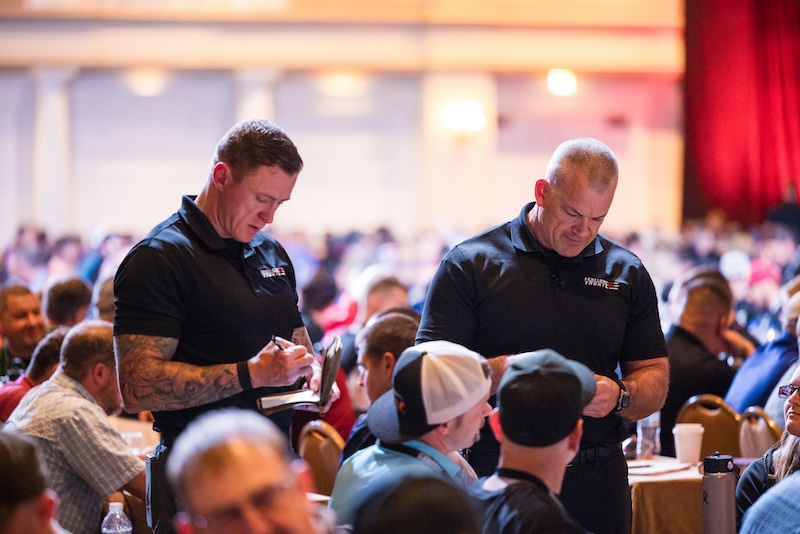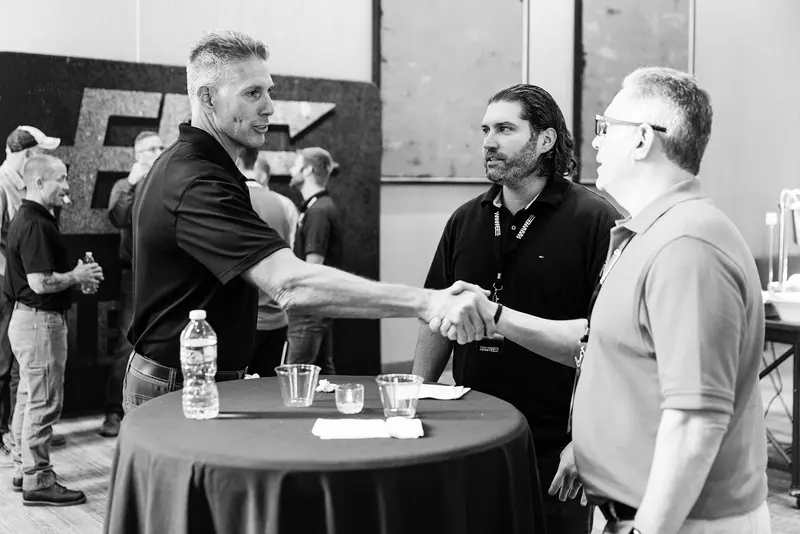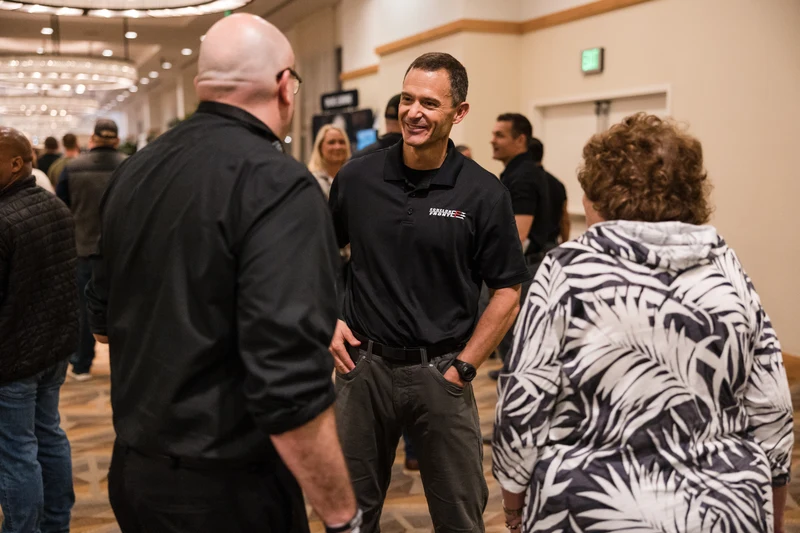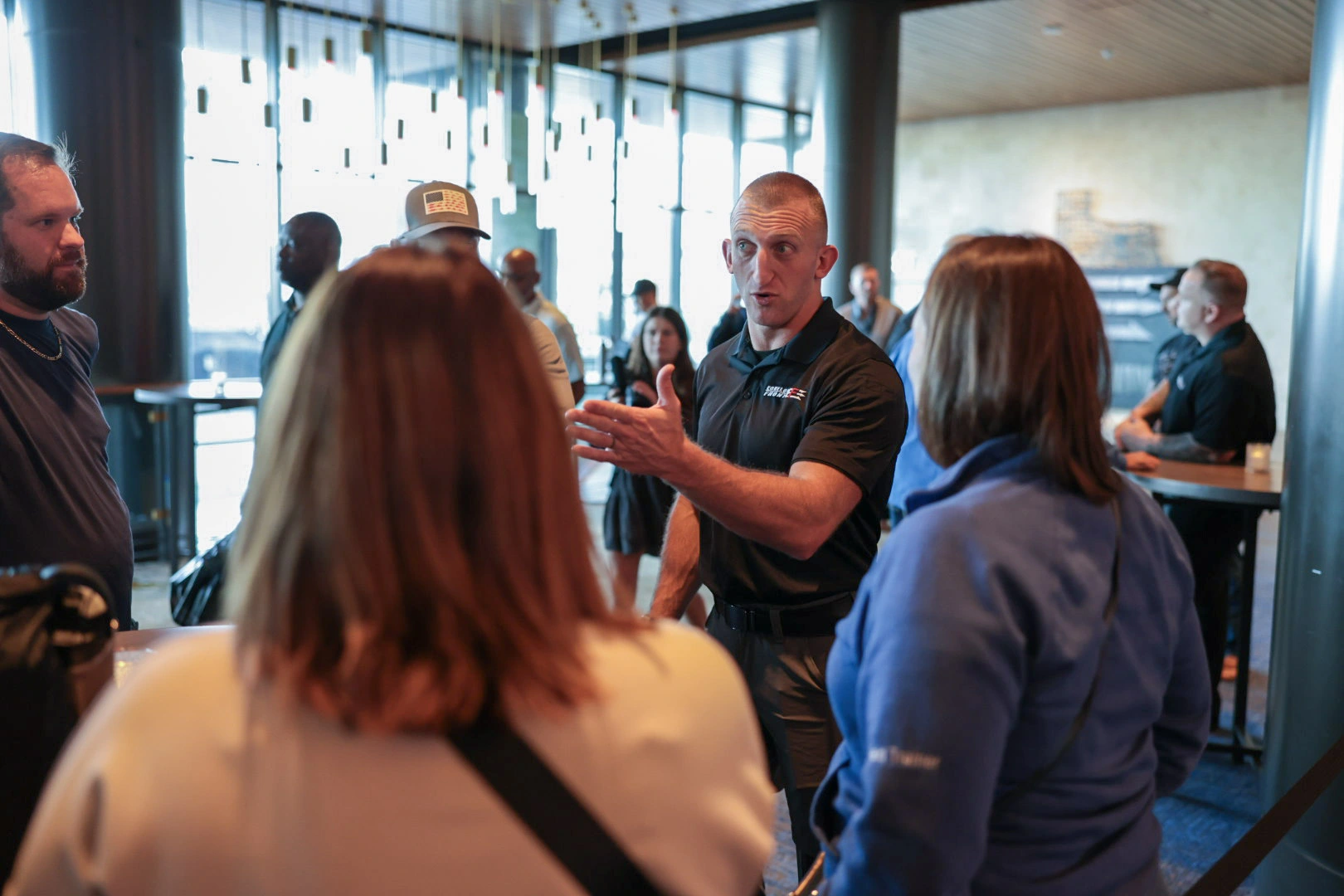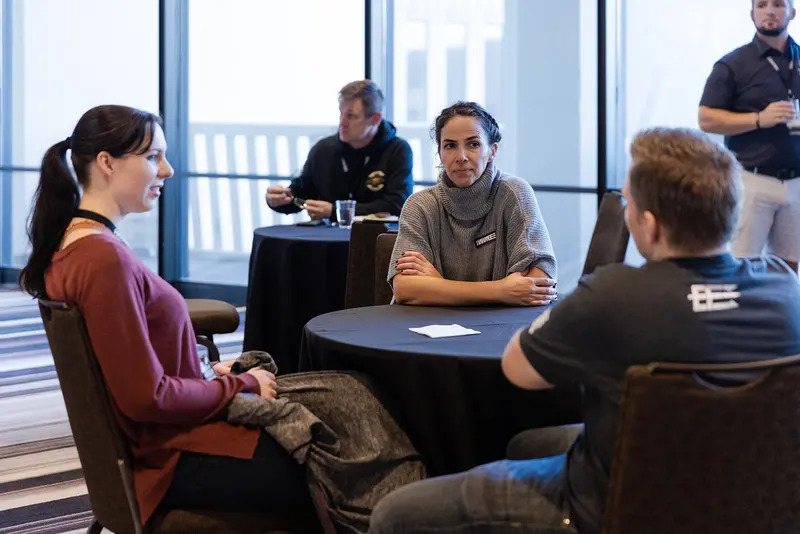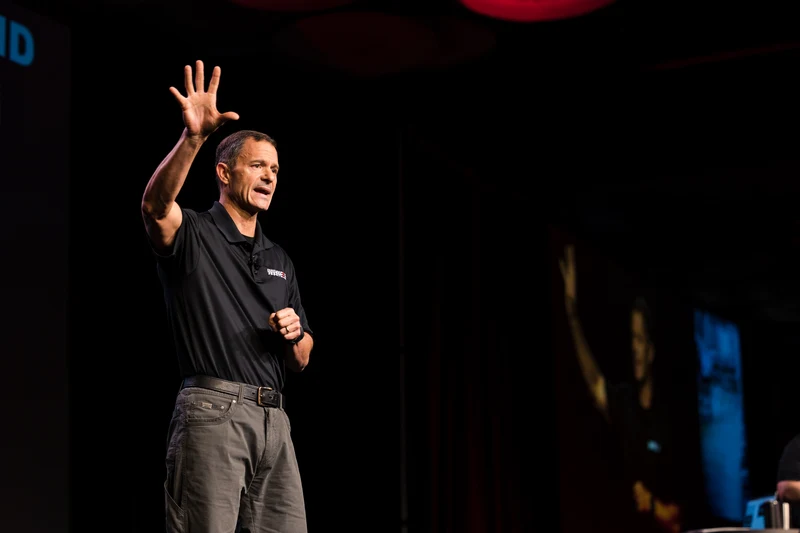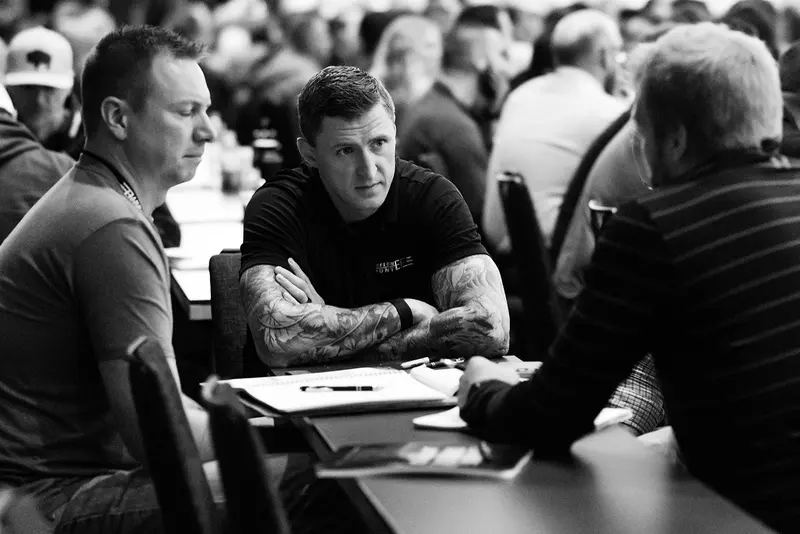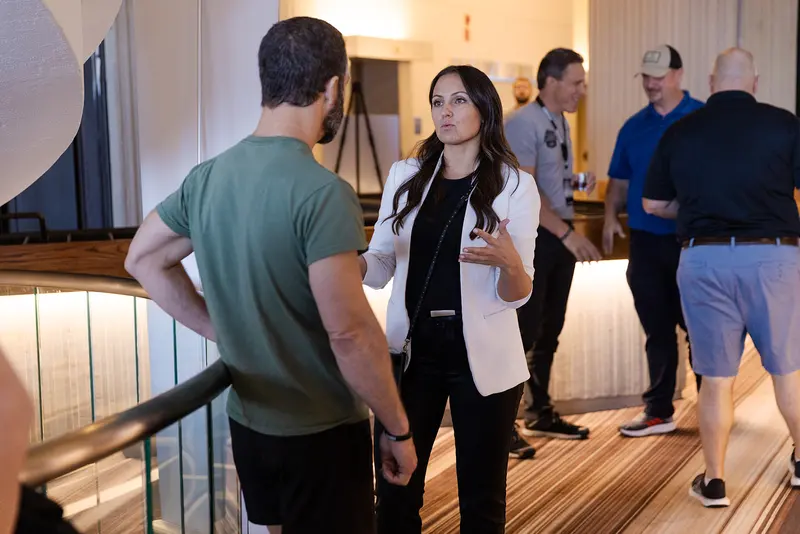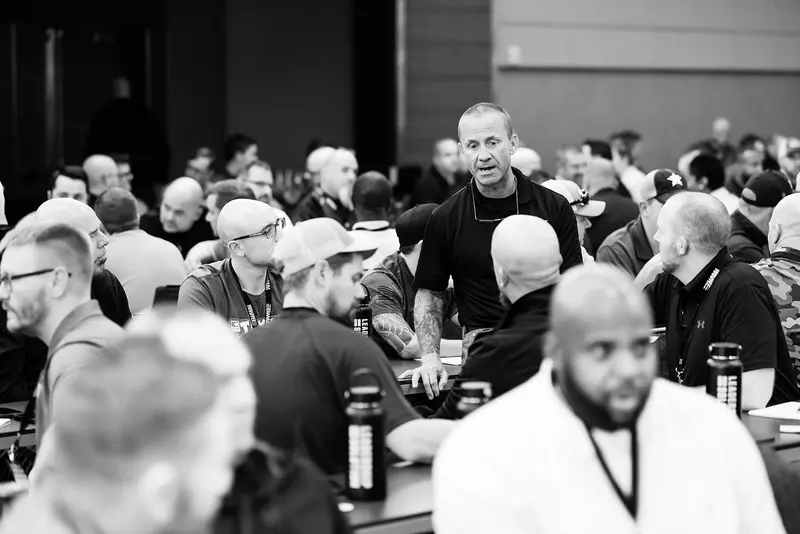Ever wonder if Leadership Development is worth it? We ran the numbers, and it's clear: there's tremendous ROI when you invest in leadership. Click here to read more.
Every leader eventually faces a moment when the situation is outside their control. The market shifts. A client’s business goes under. The weather forecast predicts rain. A competitor encroaches on companies. Circumstances change without warning, and external forces threaten all the team has been working towards. In those moments, stress
One of the most dangerous things a leader can allow – on a team, in a family, or in themselves – is a victim mentality. I’ve seen it firsthand in the Marine Corps, business, parenting, and people from all walks of life. It doesn’t discriminate. The victim mindset can show
When people hear “leadership training,” they often picture boardrooms, business seminars, or maybe even military troops preparing for combat. They don’t usually picture dinner tables, bedtime routines, or the chaos of getting kids out the door for school. And yet, the most critical leadership role many of us will ever
In leadership, change is constant, there are unknowns in every direction, and uncertainty is everywhere. But as human beings, we like to know what to expect and anticipate what’s going to happen. We want answers. We want clarity. And when we don’t get the desired information—when plans change, details are
From Blame to Ownership: Breaking Free from a Victim Mentality Life is full of unfair, unfortunate, and unforeseen events. Things are going to happen to you that are out of our control. And when that happens, our natural human tendency is to find someone or something to blame. That is
Uncertainty is an inevitable part of life. Whether it manifests in personal challenges, professional dilemmas, or societal changes, the inability to predict every outcome can leave us feeling vulnerable and unprepared. Throughout history, uncertainty has tested leaders, innovators, and individuals alike. Understanding how to deal with uncertainty is not merely
How to overcome victim mentality? The answer is ownership. Early in my time at Echelon Front, I was at an event with Jocko. During the Q&A session, a man stood up. His face was heavy with emotion. His voice was tense, not with anger, but with something deeper. Desperation. “You
Worry robs you of time, clarity, and peace in your mind, especially when it’s directed at things beyond your control. You don’t control the economy. You can’t stop people from judging you. You can’t rewrite the past. So why waste our mental energy trying? If you’ve ever wondered how to
Victim Mentality Is a Choice. Reclaim Ownership of Your Life. We’ve all been there, facing a situation that feels unfair, frustrating, or beyond our control. It’s in these moments that victim mentality sneaks in. It whispers, “This isn’t your fault.” It tempts us with blame. It convinces us we’re stuck.
One of the core principles of Echelon Front’s leadership philosophy is that we are not only Leaders at work. We are Leaders in every capacity in our lives. At work, in our communities, within ourselves, and most importantly, in our families. Quite commonly, it is easy for most of us
When we think of leadership, our minds often go to the business world, military operations, or high-performing athletic teams. But one of the most important arenas for leadership is closer to home—our families. Family life is filled with challenges, from managing schedules to resolving conflicts. While these problems may seem
Every family experiences challenges. Whether it’s communication breakdowns, financial stress, loss of a job or relative, or unresolved conflicts, these issues can strain relationships and create lingering tension. But what are family issues, and how can they be better handled to promote a tighter connection and strength in relationships rather
Relationships are paramount. In fact, they sit at the center of everything we do as leaders. No amount of strategy, experience, or authority can make up for a lack of genuine connection with the people you’re trying to lead. Without strong relationships, our words lack weight, our direction lacks clarity,
When people hear the word “leadership,” most default to thinking about the workplace—about managing teams, setting direction, and making high-stakes decisions, but that view is incomplete. Leadership isn’t just a professional skill—it’s a human one. At its core, leadership is about how we influence and care for others. And there’s
Being a parent is the most important leadership role I’ll ever hold. I’ve led Marines, coached teams, and advised organizations, but nothing tests your consistency, patience, and influence like leading your family. At home, there are no breaks, no rank, and no hiding from your gaps. You lead with who
I’m going to share something I realized nearly eight years ago. Because it still holds true today: The biggest problem in my family… is me. Not my kids.Not my husband.Not our busy schedule, the stress, or the stage of life we’re in.It’s me. But this isn’t about guilt, shame, or
You want to get the best out of your team. These days, everyone seems to be doing more with less—so let’s look at some practical strategies you can use to improve your team’s performance. Start with Positive Reinforcement Positive reinforcement is hands down the most effective tool for modifying behavior.
Success in sales isn’t a complicated formula—it takes discipline, ownership, and leadership. Whether you’re someone with decades of experience under your belt or you are early in your career, the ability to consistently close deals, exceed quotas, and drive revenue comes down to execution. If you’re asking, “How can I
Knowing how to manage performance is a crucial leadership skill that, when done effectively, can lead to a highly engaged, productive team that consistently achieves its goals. Managing performance isn’t just about setting expectations and measuring results—it is about creating an environment where individuals feel supported and challenged, where there
Good work performance is often more than just completing tasks. It’s about the way an individual approaches their responsibilities, how they contribute to the team’s success, and the level of impact they have on the organization’s objectives. But how do you describe good work performance in a way that helps
Formal performance reviews are often a routine part of personal development in the workplace. While managers provide valuable feedback, it’s equally important to reflect on your own performance through a well-crafted self-evaluation. How to write a self-evaluation for a performance review is a question many employees face. The answer lies


